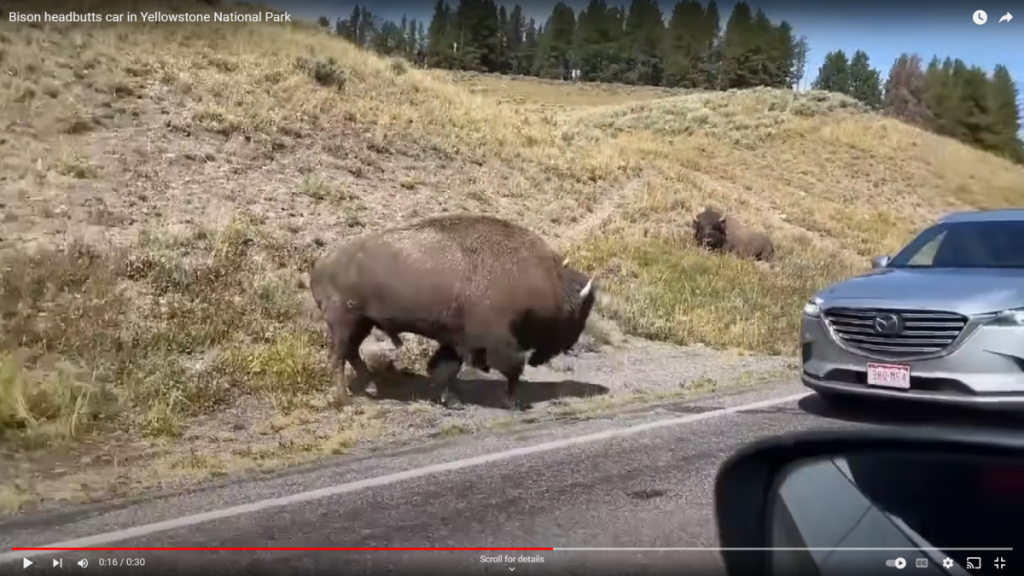Ancient Secrets Revealed: 5 Impressive Facts About Wyoming’s Mummy Cave
Written by Nick on March 19, 2023
Ancient History Hiding in Plain Sight
In 1957, just a a short walk from the highway that runs between Cody and Yellowstone National Park’s East Entrance, a man stumbled upon one of the most significant historical sites in the entire Yellowstone region — a site filled with thousands of years of human history.
Gene Smith came across Mummy Cave in 1957, and the first archaeological exploration would begin several years later. That’s when researchers would find a rock cairn protecting the mummified remains of a person they dubbed “Mummy Joe.”
Considering how many people have traveled the route between Cody and Yellowstone since the park was first established in 1872, it’s a bit surprising that local residents remained unaware of Mummy Cave for so long. Even today, an incredibly small proportion of Yellowstone visitors stop to see the site, or even know it exists.
Although traffic at this site is virtually nonexistent, its a remarkable feature that yielded researchers precious insights into the history of the Yellowstone region and the people who lived here. Let’s dive into some interesting facts about Mummy Cave.
1. “You Keep Using That Word. I Do Not Think It Means What You Think It Means.” – Inigo Montoya, The Princess Bride
Sure, the word “cave” is part of this site’s name, but Mummy Cave isn’t technically a cave. It’s actually an alcove at the base of a volcanic cliff. Wide and shallow, it’s protected from water by the cliff that towers above, keeping the “cave” extremely dry.
Located along US 14/16/20 between Rex Hale Campground and the Blackwater Creek Ranch, Mummy Cave sits just about 100 yards north of the highway, a stone’s throw from a bend in the North Fork of the Shoshone River.
2. Recovered Artifacts Span Over 9,000 Years
Robert Edgar led the 1963-1965 investigation of Mummy Cave. Because the alcove had been filled with alluvium — loose silt, gravel, and clay — over the span of some 10,000 years, Edgar’s team excavated it in layers.
Through various methods including radiocarbon dating, researchers were able to date a variety of stone arrowheads and spearheads, Shoshonean artifacts including basketwork and pottery, and thousands of animal bones. The youngest stone blades were dated to roughly 7,300 BCE.
Notably, some leaf-shaped projectile points dating from 6,500 BCE lead reserachers to believe that the people using Mummy Cave at that time were from the Great Plains. It is believed that these people adapted to the mountainous terrain of the Yellowstone region and used the cave to hunt big game.
A different type of projectile point, dated to 5630 BCE, implied that a new group had arrived from an area in Nebraska or Iowa after the previous inhabitants relocated to the north. The different artifacts and how they demonstrate the movement of different groups of people from millennia ago is truly fascinating.
3. “Mummy Joe” Likely Held High Status
In one of the uppermost layers of the site, a rock cairn shielded the body of a man. Researchers dated the body to roughly 770 CE.
The man was covered by a sheepskin garment, ornamented with fur and feather. The clothing and other items found with his body indicated to researchers that the man held high status among his fellows.
Several factors including the rock cairn and the arid landscape resulted in his body being remarkably well preserved. Incredible, considering the body has been at the site nearly 1,200 years before it was removed.
The remains of “Mummy Joe” were displayed publicly for years. But finally, when the Native Graves Protection and Repatriation Act went into effect in 1990, his remains were returned to the appropriate tribal members for burial.
4. Someone Dug There Before the Researchers
Before Bob Edgar’s excavation began in the early 1960s, others had done some digging of their own at the Mummy Cave site.
A pit, about 2.5 feet deep, had been dug in one of the areas where researchers would ultimately find the most significant artifacts. It’s unclear who exactly did the digging, and we don’t know what they took.
However, it’s believed that they were looking for relics of their own. They evidently abandoned their effort upon discovering the rock cairn that covered the remains of “Mummy Joe.”
5. Mummy Cave Was Added to the National Register of Historic Places
The 38 distinct strata of Mummy Cave represent cultures spanning from the Late Prehistoric period to the Paleoindian period. It’s an awe-inspiring cross-section of human history all in a single location, and can be somewhat difficult to fathom.
In February 1981, the Mummy Cave site was added to the National Register of Historic Places. You can still visit it today — just take a few minutes to stop on your drive between Cody and Yellowstone National Park.
Although it’s an easy stroll down to the site, visitors shouldn’t expect any impressive archaeological exhibits or particularly intriguing geological features. There’s just a depression in the rock face with some fencing in front of it — though the pristine river, swaying pines, and rocky canyon walls make for a stunning setting.
Still, knowing what we do about this site, standing in the same place hunters frequented for thousands of years can give you a lot to think about.

